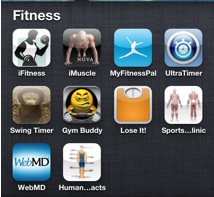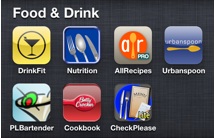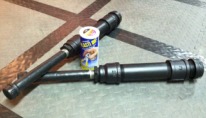|
Training for an
"Ultra" - by Bill Witte |
|
I think that most of my college
gang is going through some type of mid-life crisis. My
friend Billy here was a college roommate, fraternity brother,
fellow UD wrestler, and long time friend. And still, at
45 years old, he decides to run an ultra-marathon! I
just had to get him to write me an article about it, so hear
it is...

I was very
excited when Pete asked me to write an article on training for
an ultra-marathon; so excited that I sat down and wrote one
that night. After waking up the next morning I realized that
what I had put together was more of how I trained, and some of
the insights I picked up, but not a great article on how to
train. So what follows is my 2nd shot.
First,
what is an ultra-marathon? An ultra-marathon is any foot race
farther then a marathon (26.2 miles). That said if you go out
and run 26.5
miles, did you run an ultra? Well, technically yes, but I
would not start bragging to anyone who will listen that you
are an ultra-marathoner. A 50K is about the shortest race you
will find that will qualify as an ultra-marathon; most say
that 50 miles and up, is a better gauge of what an
ultra-marathon is.
Second, if
you decide to run an ultra-marathon, you should give yourself
at least 6 months to train. If you happen to be running 40+
miles a week already, then you could shorten that up a couple
of months. I’m going to assume that you’re running mid 20
miles a week, and have run one or more marathons, you are in
good physical condition, and you have the time to train for an
ultra (simply because this is where I started from).
Now find
the ultra that you want to run! If this is going to be your
big goal of the year, then all your training will be based
around this one event. Found one… Ready to start training?
|
|
TRAINING |
|
Check your
ego, throw it away, acknowledge that you will not win, you
will want to quit, and you will be slower than so many of the
other runners you see out on the road. The bottom line is
that training for an ultra is harder than running an ultra.
Be patient; acknowledge that you will often feel like the task
you set out to do is impossible for you. Persevere; you will
need to be able to get out and run when you do not want to,
you will need to continue running when you want to quit, and
you need to make time in your life for training.
Base
training: Pete had a good article on base training in his
newsletter a few issues ago (vol. 2011 issue 10), go back and
read this. The gist of base training is to program your body
to burn fat efficiently, and to train your body to prefer fat
over glycogen as a fuel source. This is very important
because once you run out of glycogen your body won’t even be
able to burn fat for fuel. Most people running a marathon
will hit the wall around 20 miles, and be left with 6
agonizing miles left to run. Now if you did this in a 50 mile
race you would have 30 miles left to run; and you will not
make it! You will either DNF, or miss a cutoff time.
Base
training should last about 12 weeks. Figure out your base
training HR (see below) and do not exceed it. Sound easy… it
is not.
You will
need to keep that ego in check, run so slow that you will
think you are not getting a workout; you will be passed by
everyone, you will have to walk any significant hill. Don’t
worry, just stick to the plan and you will start to see
results. Focus on your heart rate not your pace; the goal is
not to be fast, but to be efficient and train your body to
burn fat. At the end of the 12 weeks you will see that you
can run much faster at a given HR then you could at the
beginning, your body will be trained to burn fat, and you will
have reduced the amount of pounding and injuries to your body.
Phase II
training: Time to pick up the pace, the heart rate and the
mileage. Now you need to start running harder and faster, you
should have about 14 weeks until the race. Start keeping
track of you times on different runs, at least once a week,
try to beat you best time on one of your runs. This will
force you to run faster and get your body back into the mode
of pushing yourself, and building glycogen stores.
Start
extending the distance of your long run. I like to do a “2
steps forward, 1 step back” approach. For example, my long
run maybe 20 miles on week X of training, then I’ll run 15
miles on week X+1, then run 24 miles on week X+2. This is a
great way to acclimate to distance. On the weeks that you
drop you mileage back down, if you are feeling good, push the
pace and see how fast you can run it in.
By the end
of your main training phase, you should have logged a number
of long runs. If you are planning on running a 50 mile race,
you should have one run of at least 34+ miles; if you plan on
running a 100 mile race, you should have at least one run of
50+ miles. Use local races to help your training, find a
marathon or 2 and jump in.
Mileage:
If you are planning on running 50 miles then you should have
most of your weeks between 50 and 70 miles, with maybe one or
two above 70 or 80 miles as you put in some longer training
runs. In the beginning of your training, you will be much
lower in miles, but make sure you are running at least 40 a
week before you are done with your base training phase. If
you are planning on running 100 miles, then add 10
miles a week or more. You can run 90 miles a week; but if you only
run 15 miles a day for 6 days you will be the fastest 15 miler
at an ultra, but you will not finish. The key to training for
an ultra is you long run.
Taper
phase: Start tapering off in your mileage and your effort
level about 4 weeks prior to the race, if you are hyper like I
am do 3 weeks, but listen to your body. If you are feeling
beat up and having lots of aches and pains allow enough time
to taper and let your body heal. If you feel strong and
injury free then you may only need to taper for 3 weeks. Your
runs during this phase should not exceed 26 miles, and as the
race comes closer the distance and effort level should be
reduced. By the time the race is near you should be feeling
healthy, fresh, full of energy, and hopefully injury free.
|
|
Bits and
pieces: |
-
Walking and eating
are part of an ultra, your long runs should include
walking and eating; you don’t want the first time you tried
walking fast while eating to be in the middle of the race.
-
The most important
part of your training week is your long run. If you
don’t do anything else all week, make sure you get your long
run in!
-
The second most
important day is the day after your long run; you should
always go out for an easy run the day after your long run,
even if it is just a few miles. Run easy, just loosen up the
legs and get the stiffness out.
-
Heart Monitors are
the best training tool you can get, so if you don’t have
one go out and buy one. If it is in your budget, pick up a
GPS watch with a Heart Monitor. Personally I love my Garmin
305 (now the 310).
-
Your mind is your enemy; your mind is your best friend. Your
body can
perform to an extraordinary capacity, but it is usually your
mind that prevents it from doing so. When things hurt, when
you want to quit, when you want to walk, when you want to
catch a ride back to you house so you don’t have to finish the
run… this is when you need to find a way to motivate yourself,
or at least rationalize going on. I tend to scream at the top
of my lungs a few times to shake myself out of “quit” mode
(embarrassing at times), I know runners who convince
themselves to run “just one more mile”, and when they do that
mile they convince themselves to run “just one more mile”.
Whatever it takes, you need to train your mind to work with
your body in an endurance race of these distances. Face it,
you will be out running for 8 to 30 hours depending on the
course and distance… get ready for it. You will have many,
many days that you think running 50, 62, or 100 miles is
impossible, do not be defeated by these thoughts. You will
have other days when you feel like you are the king of the
running world and that you will kill it at the race, do not be
lulled into complacency by these days.
-
Listen to your body, if you have some injuries that need
tending, and then
back off for a week or two until your body feels a bit better.
|
|
Race Day |
|
Race Day Prep:
Have a realistic race pace and plan. Pack everything the day
before and double check that you have everything. Set 2 or
more alarms, you trained too hard to oversleep. Try to get a
good night sleep! Wake up and relax, know what you are going
to do, what you will eat, what you will drink, coffee or no
coffee? Arrive at the race with plenty of time to check
in/register and relax. Don’t try anything new! Run in
equipment (shoes, backpack, shorts…) that you are used to
running in; eat food you are used to eating during a run,
drink fluids that you are used to drinking. Get a spot at the
starting line with people who will be running your starting
pace (I start slow, so I move farther back than my total race
pace would indicate).
The Race:
When the gun goes off, remember that there is only one race
going on, and it is yours. Unless you are a very talented
runner, you are only racing yourself. Don’t get caught up in
someone else's race or you will likely sabotage your own. Do
not go out too fast! Don’t get caught up in race day fever
and start crushing the first few miles at a 7 minute pace; it
is better to go out slower and pick up the pace over a few
miles, as this allows your body to warm up and start off
burning fat. Pace yourself, stay comfortable, and enjoy the
running.
If you are
passing, give you fellow runner some words of encouragement,
if you are being passed complement you fellow runner on their
pace, if you are running next to someone, engage them in
conversation… all of this makes the race more fun and the
miles tick by faster.
Your first
priority is your health! If you have a health issue that is
considerable, stop! There will be many more races to run.
Your second priority is to finish. If you are not at risk of
serious health issue or injury then keep going. If you quit
unnecessarily you will always look back and wonder what could
have been. If you push through the pain and will yourself to
go on, you will always look back and be proud of that moment.
"If it hurts to
run, and it hurts to walk, then RUN!"
|
|

|
|
|
Bodyweight Exercise of the Month! |
|
Bridge Cross
Kick

Summary:
Here's a good exercise that I
borrowed from
Fitness Magazine. I
can't say that I actually perform this exercise myself, but I
do know that holding a bridge can certainly burn your
hamstrings and glutes with two legs down, nevermind one.
The range of motion and target muscle groups of this exercise
make it one that should interest most woman, since I get
questions about exercises of this category pretty frequently.
Come on ladies... give it a shot!
J
Target: abs, butt, legs
(rectus abdominus, gluteals, hamstrings)
Count:
2 count
Description: Start
lying flat on your back. Keeping your elbows on the
ground do stablize yourself, move your feet in so that you
come up to a bridge on your upper back (there should be a
straight line from your shoulders to your hips to your knees).
Bracing on one foot, raise your other leg straight up, but out
to the side at a 45 degree angle. The range of motion is
from this point to a point where your foot is back behind your
down heel. Repeat this range of motion for repetitions
before switching to your other leg.
|
|
There's an App
For That |
|
Yeah, I'll admit that I'm one of
the iPod generation. I've had an iPod Touch pretty
much as soon as they started coming out and recently
graduated to an iPhone. Definately my all time
favorite gadget... and I do like my gadgets. You gotta like the HUGE quantity of applications that you can
download for just about anything, for a fraction of the cost
of most computer programs. There are also a ton of
fitness apps out there, so I thought it might be worthwhile
to highlight some of the ones that I currently have
installed on my iPhone.

- UltraTimer
- $0.99 - This program is very versatile in what it allows
you to do with timers. I specifically like the way
that you can set up several different interval times and
save them, rather than changing your timer for each
workout.
- Clock -
Stopwatch/Timer - Although this is a barebones app
that comes with the iPhone/iPod Touch, you can't argue
with the simple use of the stopwatch and countdown timers.
- iMuscle - $1.99
- There are quite a few programs out there like this one,
but the 3D animation of exercises really makes this one
nice.
It allows you to create workouts, track your progress, calorie intake and
expenditure, and graph your progress. I use
it mostly for the exercise visuals, but it's a good, well
rounded, app.
- Gym Buddy
- $2.99 - Another great workout log program. This
one doesn't teach you the exercises like some of the
others, but has quick and easy to use logging, along with
some workout timers, progress graphing, and other cool
features.
- MyFitnessPal
- FREE - Easy to use calorie counter with a huge database
of foods to choose from in addition to exercises to help
you determine your caloric intake to burn ratio and how
you are doing on your goal plan.
- Lose It!
- FREE - Set goals and establish a daily
calorie budget. Track your food and exercise and
stay within your caloric budget to help you achieve your
goals.

- Nutrition
Menu - $0.99 - Great reference with nutritional
information of 93,000 food items at your fingertips
whether you go out to eat or cook at home.
- DrinkFit
- $1.99 - Download at your own risk! Although it isn't much
fun knowing how many calories are in that margarita, or
how many carbs are in your favorite beer, this app has
that information all ready for you if you're looking for a
good guilt trip!
- AllRecipes Pro
- $2.99 - Nice mobile interface to one of the better recipe sites
for food, smoothies, whatever you're looking for.
- Sports Injury Clinic
- $2.99 - Another good mobile app that references one of my
favorite websites for sports injury, diagnosis, and
treatment.
- WebMD
- FREE - WebMD is a great resource for injury as well as medical
information and this app provides a great interface to
access the web content.
- Kindle
eReader - FREE - Although eReaders can be in a
category all by themselves, I had to mention how
convenient that I find having some of my fitness reference
books handy. Currently I have "Nancy Clark's Sports
Nutrition Guidebook" as well as "The Spartan Workout"
loaded up.
- MUSIC!
- Hey, it is an iPod after all, and you can't argue with
the power of a good workout mix to keep you motivated.
If you want a little extra, check out Nike BOOM
(FREE),
which even has some motivational dialog to go along with
your tunes. Shazam (FREE) is also good for "naming
that tune" on the radio and giving you easy access to
download it.
Got any other good ones?
Shoot me an
email... I'm always looking
for new apps!
|
|
Grip Dip |
|
Here's one for my fellow
Do-It-Yourselfers out there. I've had challenges in
the past with some of the grips that I've had to design for
some of my fitness equipment. I've tried athletic
tape, baseball bat grip tape, and some pretty expensive
rubberized grip tape for lacrosse sticks. Most of
these tape grips start out pretty good, but after some time
they get all curled up and start getting uncomfortable.
This was a problem that I was battling with my
homemade
clubbells. I
was at Home Depot the other day and found this stuff called
Plasti Dip. It's a rubberized paint that comes in a
tube with a pop-top lid. It's intended for the handles
of pliers, screwdrivers, and related hand tools. For
most applications you just dip the tools right in the Plasti
Dip container, however, I had to get creative with my
clubbells, since the handles were longer than the Plasti Dip
tube. So by using a length of PVC pipe with a cap on
it, I was able to dip the pipe handle of the clubbell in a
few times to evenly coat the entire handle.

I'd have to say that the
rubberized grip of the Plasti Dip handles feels very
comfortable and it appears to meet my needs. I've been
swinging the clubbells for a week now and there are no signs
of wear or degradation. One tube of Plasti Dip is just
under $6, so really not bad in comparison to the tapes that
require replacement somewhat frequently. Give it a
shot!
|
|
Base Training
Heart Rate |
|
Determine
you base training HR: (from Mark Allen’s article which you can
find
here. Here is the
formula:
1. Take
180
2.
Subtract your age
3. Take
this number and correct it by the following:
-
-If you
do not workout, subtract another 5 beats.
-
-If you
workout only 1-2 days a week, only subtract 2 or 3 beats.
-
-If you
workout 3-4 times a week keep the number where it is.
-
-If you
workout 5-6 times a week keep the number where it is.
-
-If you
workout 7 or more times a week and have done so for over a
year, add 5 beats to the number.
-
-If you
are over about 55 years old or younger than about 25 years
old, add another 5 beats to whatever number you now have.
-
-If you
are about 60 years old or older OR if you are about 20 years
old or younger, add an additional 5 beats to the corrected
number you now have.
|
|
It's Go Time!
|
|
The second leg of
the holiday trifecta is complete! Aside from a little
nibble here and there while walking around the streets with my
daughter on Halloween, I did pretty well staying away from the
candy. Thanksgiving wasn't too bad either. Luckily
we drove up to see my family, which means that I don't have to
eat all the leftovers every day
J. I absolutely DID
indulge while I was up there (especially on my mom's stuffing)
but there shouldn't be any lasting damage... that I know of. Ate like a horse on Thursday, got back to the working out on
Friday! Gotta do it... I work too hard to fall into a
downward spiral on my diet and fitness!
It's always nice
to get together with my family for the holidays. Crazy
as it sounds, with 7 kids between us, we somehow get around to
various pushup contests, wrestling matches, and just general
horsing around. With my brothers and I all involved in
coaching at some level, and the kids involved in some type of
athletics, it's more of a tradition than the exception.
I'm hoping that the activity level carries on to the next
generation... I wouldn't have it any other way
J
Have a Happy, Healthy, Holiday Season Everyone!
For
prior issues of this eNewsletter, to subscribe, or
unsubscribe, please visit the following
link -->
todayfitness.net/news.
Exceed Your
Potential!
Pete
Mazzeo, CPT
pmazzeo@todayfitness.net
“ If you can't fly, run. If you
can't run, walk.
If you can't walk, crawl.
But by all means, keep moving.” - Martin Luther Jr.
youtube of the month -->
Sandbag Training Exercises
Josh
Henkin's 10 Best Sandbag Training Exercises for MMA
Conditioning.

|
|